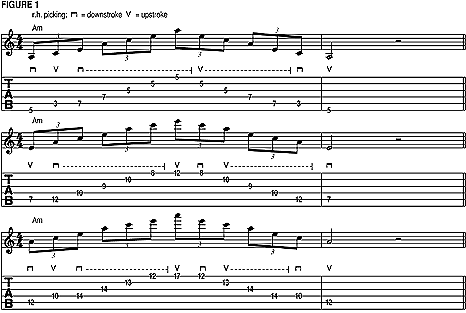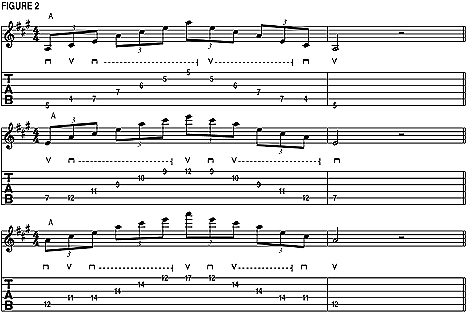A Clean Sweep: Mastering Sweep-Picked Arpeggios with Yngwie Malmsteen

The following is a classic Guitar World column by Yngwie Malmsteen.
When I was first getting into the guitar, I played it incessantly. I lived it, breathed it, ate it and slept it. I was also extremely self-critical, so from early on, I made sure to develop good playing habits — I constantly strove to sound in tune and have a great tone, and to play cleanly and in time.
But I was also very hard on myself. If I played something incorrectly, I whipped myself mercilessly. Whenever I made a mistake, I made sure that I would never allow myself to repeat it. Every guitarist wants to play well. But in reality, if good intentions were all it took, then everyone would be great.
The simple truth is that in order to become good, you have to be obsessed. You have to put in an awful lot of time and hard work, and couple that with desire and unflagging perseverance. Now I can’t give you the burning desire to become a great player. That has to come from within you (but believe me, the rewards that come from all the years of hard work are worth the effort).
What I can do, however, is give you some pointers on how you can make better use of your practice time. For starters, whenever you encounter a new or difficult technique, don’t learn it half-assed, and don’t rush through it. It’s essential that you be patient and take the time to break down the mechanics required to master it.
Here’s a good example: last month we talked about arpeggios, an area that gives a lot of guitarists problems. Now, most guitarists can get away with playing the two- and three-string arpeggios we covered last month using just about any picking technique, but when you have to play arpeggios spanning over five or six strings, the technical challenges become magnified.
The only way to really get any speed when playing these kind of arpeggios is to use sweep picking—picking three or more strings in the same direction with a single stroke. I think most guitarists have a general idea of how to approximate the sweep picking technique, but only a few truly play it correctly. That’s because most players simply don’t put in the time and effort necessary to master it.
All the latest guitar news, interviews, lessons, reviews, deals and more, direct to your inbox!
Whenever a guitarist can’t execute sweep arpeggios properly, it’s usually because he holds down a barre chord while articulating each note (and the notes end up ringing into each other), or he tries to play very fast, and in the process sacrifices the precision and clarity needed to make this technique sound good. Either way, it sounds like shit.
The only way to correct these problems is to break down the right- and left-hand components of sweep picking, master them separately, and then coordinate them.
Of course, it’s not easy. You’ll have to put in a lot of practice time to get it right. To get a feel for the right-hand picking technique, you have to let the pick “fall” from string to string as if you were strumming a chord. It’s important that you don’t separate the pick strokes.
When executing an upward sweep, drag the pick upward over the strings in one fluid motion. Again, it’s imperative that you don’t use individual upstrokes. The left-hand component is just as important. You need to mute each string with the left hand immediately after picking it (by lightly lifting—or “rolling”—your fretting finger) to keep the notes from running into one another and sounding like a strummed chord. I’ve written out some of my favorite arpeggio patterns for you to practice.

FIGURE 1 depicts an A minor arpeggio played in three different positions, while FIGURE 2 covers three A major patterns. You should work on them until they become second nature to you, because only then will you be able to apply them comfortably in real-life soloing situations.

